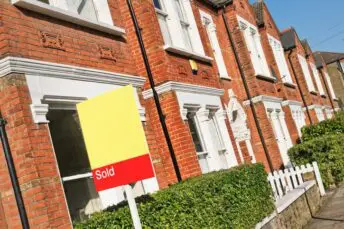House Price Watch Sept 2021
House prices continue to climb, albeit at a slower pace than earlier this year. Transactions too, whilst lower than earlier in 2021, are above normal levels for this time of year. This suggests the rise in housing demand post pandemic has been driven by more than just the stamp duty holiday and has further to run. This will be balanced against a backdrop of rising cost of living and the ongoing shortage of homes available for sale.
What’s happening nationally
House prices are up on average +1.6% in the past month and are up +9.3% in the past year.
Indices based on:
Land Registry – registered property transactions in August.
Nationwide & Halifax – mortgage valuations in September.
Rightmove – asking prices posted on Rightmove in September.
*Rightmove is not included in the index average as the basis for its index is different (asking price vs agreed sale price)
| Index reports: | Monthly change | Annual change |
|---|---|---|
| Land registry | +2.9% | +10.6% |
| Nationwide | +0.1% | +10.0% |
| Halifax | +1.7% | +8.5% |
| Rightmove | +0.3% | +5.8% |
| Average change | +1.6% | +9.3% |
House prices in your area
House prices have increased in all UK regions, with the highest rises over the past year in Scotland (+16.9%), Wales (12.5%), the North East (+13.3%) and the North West (+12.4%).
Price growth in Liverpool continues to be the highest among the UK’s major cities, with average prices up +9.7% in the 12 months to September. Manchester and Sheffield are also registering high levels of growth, at +8.1% and +7.6% respectively.
| UK Region | Average price £ | Monthly change | Annual change |
|---|---|---|---|
| England | |||
| Nothern Ireland | |||
| Scotland | |||
| Wales | |||
| North West | |||
| Yorkshire and The Humber | |||
| North East | |||
| West Midlands | |||
| East Midlands | |||
| South West | |||
| East of England | |||
| South East | |||
| London |
| UK City | Average price | Annual change |
|---|---|---|
Market Monitor
Second lowest month for transactions in 2021 but up on last year and above average for this time of year.
Buyer demand remains stable.
Housing stock is further depleted as new seller instructions decline over the past month.
Seller’s market continues with time to sell well below 12 month average.
How busy is the market?
- Not busy
- Normal
- Very busy
- Transactions second lowest month of 2021
- Total number of transactions in August 98K
- +32% from last month
- +21% higher than August last year
Homes for sale vs homebuyers
- Good availability of homes
- Normal
- Shortage of homes
- Buyer enquiries stable (0% RICS); no change this month
- Seller enquiries down (-15% RICS); fifth month in a row
- Average stock per agent 49; lowest stock in 8 months (incl under offer/ Sold STC Rightmove)
Average speed of sale
- Fast
- Normal
- Slow
- 37 days to find a buyer up from 36 days last month (12 month average 50 days Rightmove)
What the experts say
Rightmove

“While the holiday-starved took their break over summer, the high ratio of buyer demand to properties for sale means that the property market remains stockstarved despite the summer lull lessening overall activity. Competition among potential buyers to secure their next home is now more than double what it was this time in 2019. To be in pole-position in the race for the best property you need to have greater buying power than the rest of the field. That traditionally would mean deeper pockets to outbid other buyers, but in the most competitive market ever, today’s ‘power buyers’ also need to have already found a buyer for their own property, or to have no need to sell at all.”
Nationwide

“House prices have continued to rise more quickly than earnings in recent quarters, which means affordability is becoming more stretched. Raising a deposit remains the main barrier for most prospective first-time buyers. A 20% deposit on a typical first-time buyer home is now around 113% of gross income – a record high. Recent price patterns suggest an element of rebalancing is occurring where most of the regions that have seen the strongest price growth are those in which affordability is still close to or below the long run average.”
Halifax

“While the end of the stamp duty holiday may have played some part in the house price figures, it’s important to remember most mortgages agreed in September would not have completed before the tax break expired. This shows that multiple factors played a role in house price developments during the pandemic. Against a backdrop of rising cost of living and impending increases in taxes, demand might be expected to soften, with some already indicating lower levels of buyer activity. Nevertheless, low borrowing costs and improving labour market prospects for those in employment are likely to continue to provide support.”
Zoopla

“Demand from buyers searching for space, and making lifestyle changes after consecutive lockdowns, has further to run. Balancing this however, will be the more challenging economic environment as we move into Q4.”
RICS

“The September 2021 RICS UK Residential Survey results show a steadier trend in buyer demand coming through, following a brief pull-back in the wake of the flurry of activity seen prior to the phasing out of the Stamp Duty holiday. As such, this appears to be supporting expectations that sales will stabilise going forward, although a lack of supply remains a key impediment.”





